Explore the mysterious charm of the Fire Eel, a striking freshwater fish with bold red stripes and a personality to match. Learn care tips, tank setup, diet, and more in this guide.
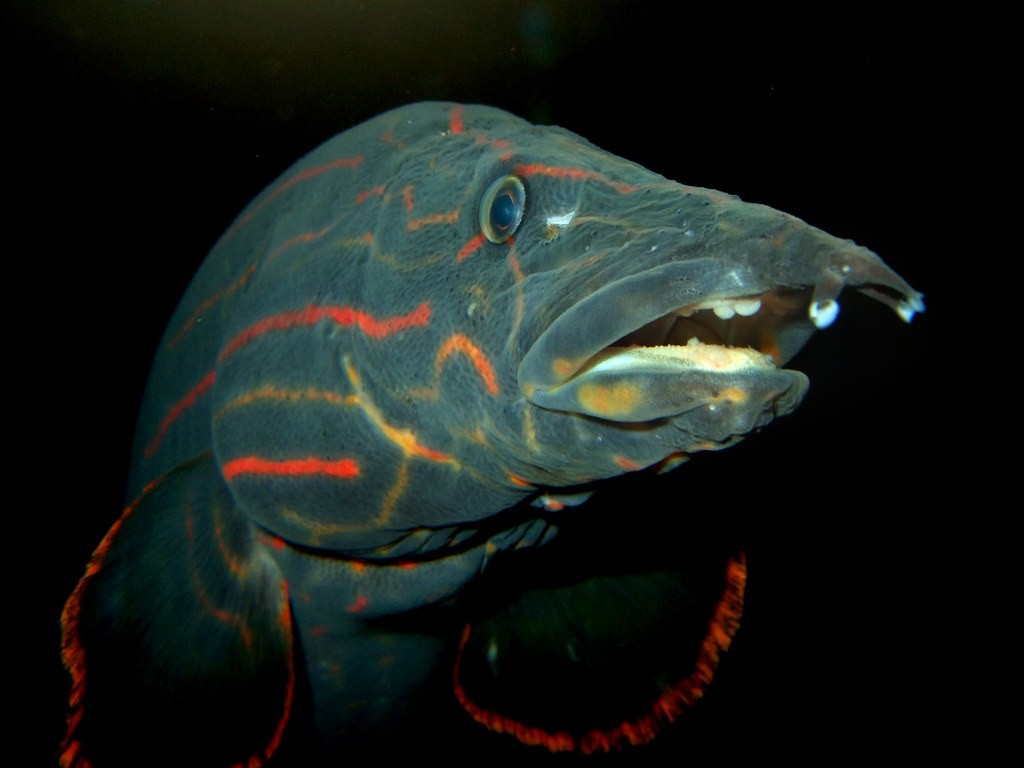
Fire Eel: Striking Predator of Large Aquariums
Looking for a fish that’s a little mysterious, a little wild, and totally fascinating? Meet the Fire Eel (Mastacembelus Erythrotaenia). Don’t be deceived by its name, though. The fire eel is not a true eel.
It’s a long, eel-like fish with vibrant, fiery red markings found in large tanks, with the potential to grow up to 1m in length. It’s also known for its elegant movement, burrowing habits, and surprising intelligence.
Fire eels are mostly nocturnal. During the day, they tend to hide under driftwood or bury themselves in the substrate with just their snouts poking out.
This Mastacembelus erythrotaenia intro tells you everything you need to know, from their natural behavior and tank needs to feeding behavior and compatibility.
If you’re thinking of adding a spark to your tank, then this fire eel overview is just for you.
Author’s Note: Check out our post on The 13 Freshwater Aquarium Eels That Can be Kept as Pets for even more eels!
Natural Habitat and Origins
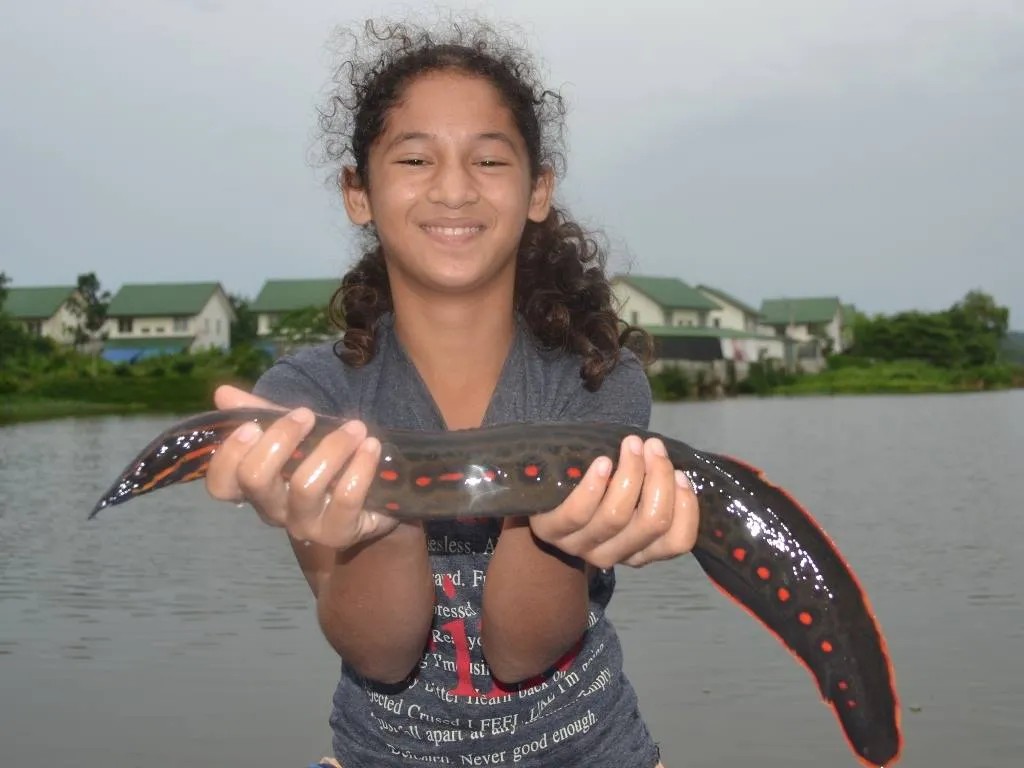
In the wild, Fire Eels are found in slow-moving rivers, swamps, and floodplains across Thailand, Vietnam, Cambodia, and Indonesia.
These murky waters in the fire eel’s natural habitat are packed with leaf litter, sandy substrates, and plenty of hiding spots, just perfect for a shy, bottom-dwelling fish that likes to burrow and explore in secret.
One interesting aspect for fire eel enthusiasts is their conservation status, evaluated by the International Union for Conservation of Nature (IUCN). The fire eel is listed as ‘Least Concern’ (LC), signifying they are not endangered and are still found in abundant numbers in their natural environment.
This positive assessment is good news for aquarists, as it suggests you can readily find these unique freshwater fish for your home aquarium, provided you can meet their specific care needs, details of which we will share throughout this post.
Recognizing the Species
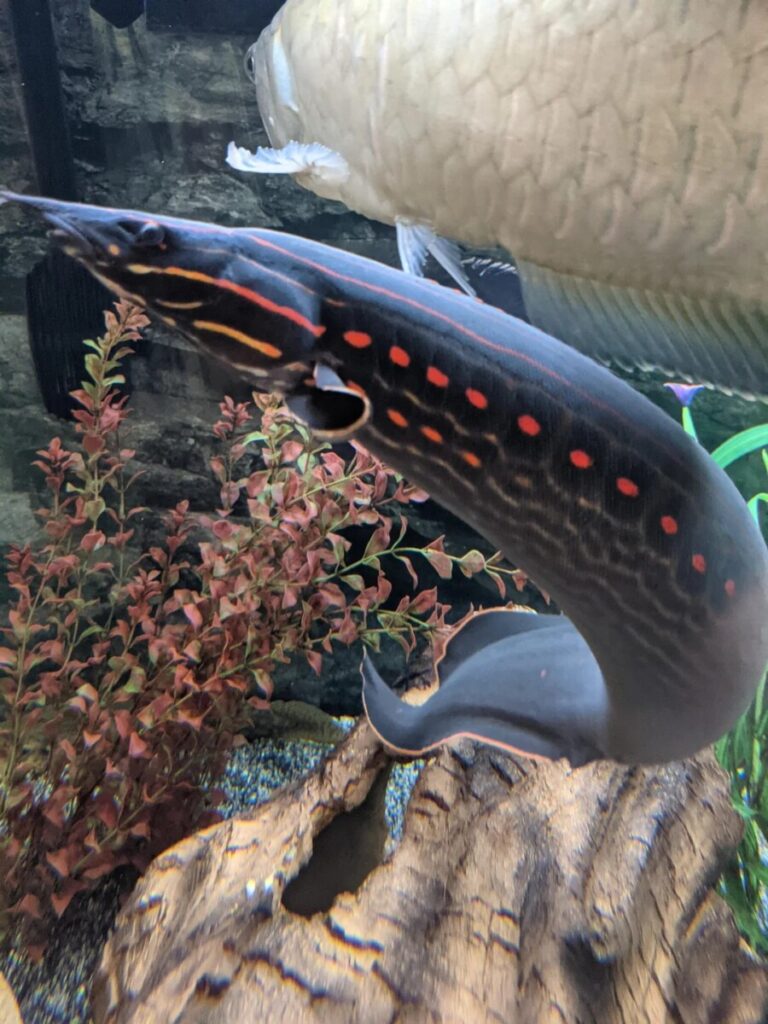
Identifying a fire eel is easy when you know what to look out for. The first thing you need to know is that this species belongs to the spiny eel family.
It has an elongated, snake-like body that turns heads. The bright red or orange stripes and spots along its sides and fins give a contrast to its dark olive to brown base color. The older fire eels become, the more vivid those markings become. Their personality becomes bolder, too.
Tank Setup Essentials
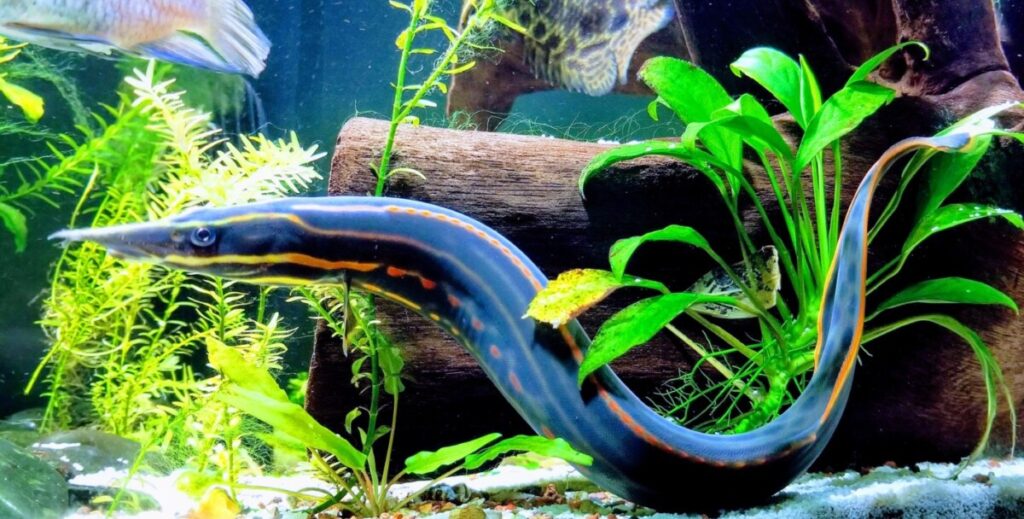
Setting up a home for your fire eel is all about mimicking their natural habitat. Think soft sand, dim lighting, and lots of driftwood and other cover. These guys really like their privacy!
Tank Size
Let’s not sugarcoat it, Fire Eels get BIG. Juveniles may start small, but adults can grow over 30 inches long.
So, when you’re designing your tank, make sure it’s at least 75 gallons. But ideally, go for 150 gallons or more long rectangular tank if you want your eel to thrive.
Fire Eels are professional escape artists. So ensure your tank has a tight-fitting and secure lid to prevent escapes. You may even need to use weights to keep the lid down, especially as they grow larger and stronger. Consider any gaps and opening’s size as Fire eels can fit through surprisingly small openings.
If you’re planning long-term, always size up. A cramped eel is a stressed eel, and a large aquarium eel, like the fire eel, loves its space.
Substrate & Tank Decor
Use soft sand in your fire eel tank setup because it’s gentle on their bodies and perfect for burrowing. Avoid sharp gravel that could cause injury.
Add driftwood, caves, smooth rocks, PVC pipes, and dense rooted plants to create sheltered areas that give them multiple places to hide, making them feel more secure.
Water Parameters and Maintenance
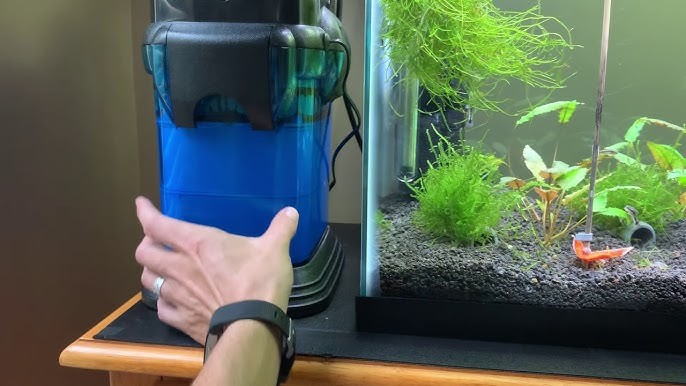
Penn-Plax Cascade All-in-One Aquarium Canister Filter
Found On Amazon
Fire eels might look tough, but they’re actually pretty sensitive when it comes to their environment.
In its natural SE Asia habitat, fire eels thrive in warm and slightly acidic to neutral waters. Here’s how to create optimal fire eel water conditions in your home aquarium.
- Keep the temperature between 75°F and 82°F
- Aim for a pH range of 6 to 8
- Fire eels do best in soft to moderately hard water, so keep the general hardness level between 5 and 15.
- Fire eels prefer low to moderate water flow, so choose a filter that keeps things clean without creating too much currents.
Don’t skip your regular fire eel maintenance. At least once a week, do a 25-30% water change to prevent toxin buildup and test your water parameters.
Pro tip? Consider adding some hardy live plants or floating plants to help mimic their natural, shadowy environment.
Author’s Note: Checkout the post on The 7 Best Aquarium Canister Filters Reviewed (2024) for an in-depth guide on choosing the right filter for your aquarium!
Diet and Feeding Habits
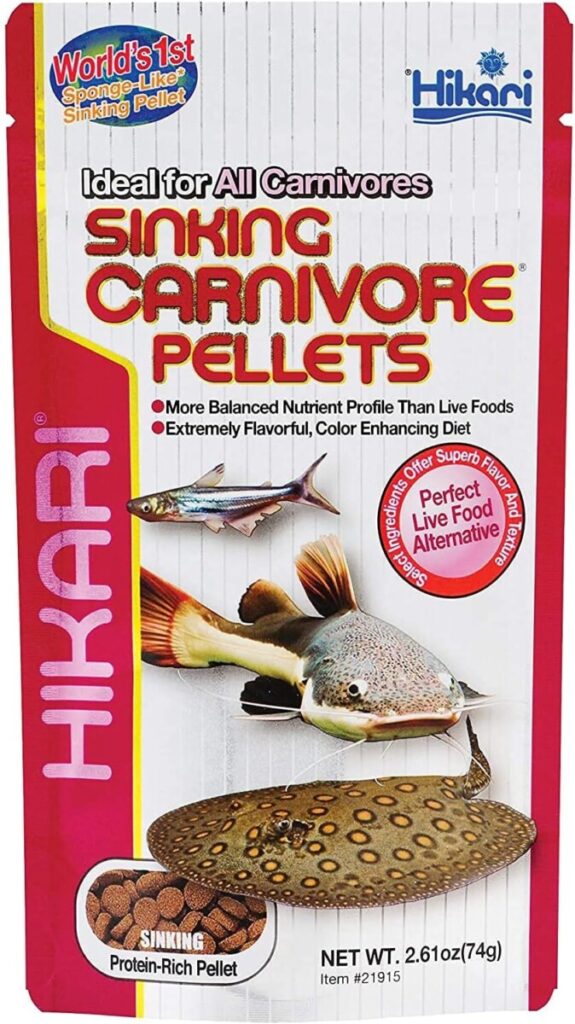
Sinking Carnivore Pellets for Pet
Found On Amazon
These eels are carnivorous and love a meaty meal. This fire eel feeding guide will tell you what to feed your juvenile and adult eels:
- Live or frozen bloodworms
- Blackworms
- Earthworms
- Shrimp
- Occasional feeder fish (with caution)
- Pellets (for the adults)
Fire eels can be shy eaters, especially when new to a tank. They often prefer to eat at night or in dim lighting, so don’t be scared if they skip a meal or two while settling in.
Over time, you can train them to accept pellets or frozen food using feeding tongs.
Feed juveniles once a day, and the adults 3 – 4 times per week. Don’t overfeed them because they have slow metabolisms and can become bloated, fat, or lazy.
Tank Mates and Compatibility
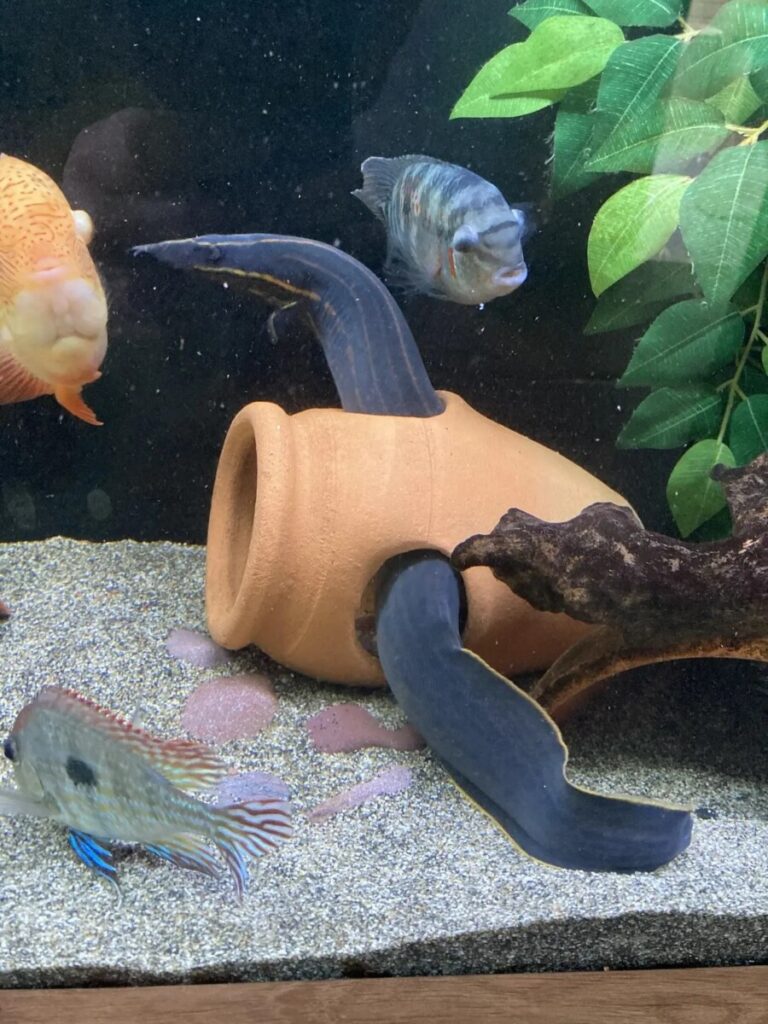
Despite their size, they’re usually peaceful. But with smaller tank mates, they can mistake them for food. Here are some compatible fire eel tank mates to consider:
- Large peaceful cichlids (like Severums or Uarus)
- Silver Dollars
- Bichirs
- Larger Gouramis (like the Giant Gourami or Snakeskin Gourami)
- Clown Loaches
Avoid putting them in the same tank with tiny fish, shrimp, or aggressive species. Fire eels don’t like sharing space with their own kind, so make sure you don’t put them with any other eels.
Author’s Note: Checkout the following post if you are wondering If Pet Fire Eels Are Dangerous to Their Human Owners!
Breeding Notes
Breeding fire eels in a home aquarium is incredibly rare. Here’s some fire eel breeding info you may want to know.
Fire eels require enormous tanks, specific water conditions, and seasonal triggers that are hard to replicate in a home aquarium.
Most commercial fire eels you see are wild-caught or farm-raised in large facilities. If breeding occurs, it’s usually in ponds or specialized commercial setups. Fry handling is delicate, and it requires expert care.
For most hobbyists, it’s not worth the hassle, and the best approach is to enjoy fire eels as stunning display fish purchased from a local fish store.
Health Issues and Prevention
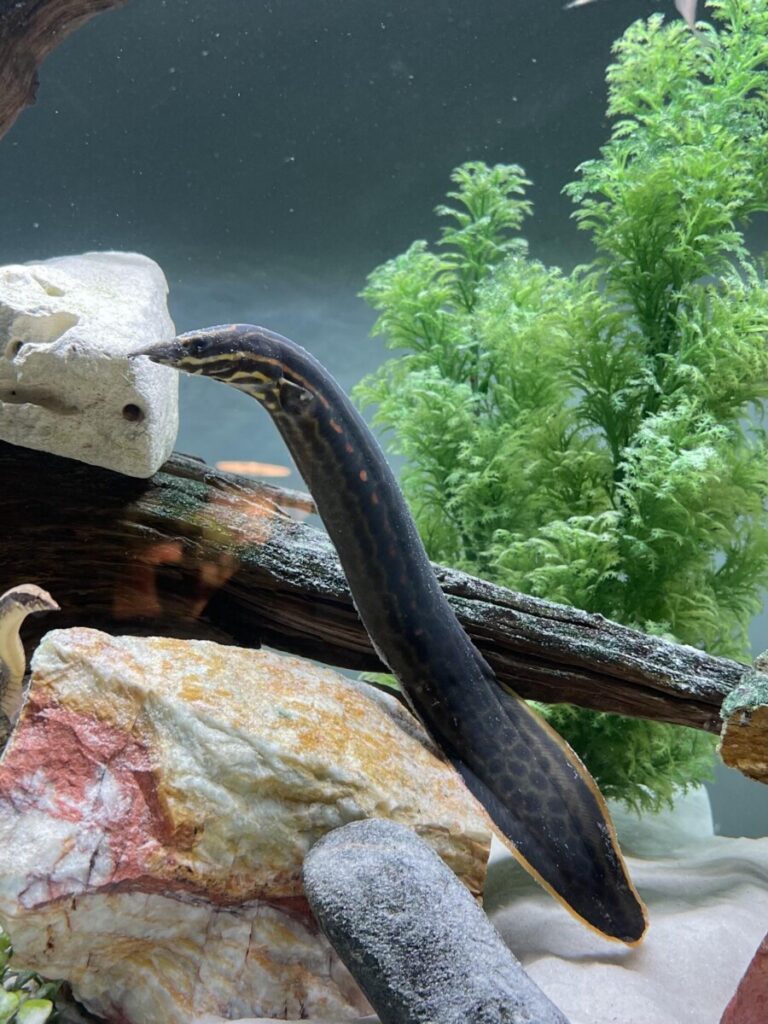
Fire eels are fairly hardy once settled, but they can be prone to a few health issues, like:
- Skin abrasions from sharp decor or rough substrate like gravel.
- Parasitic infections (especially in new or wild-caught specimens).
- Poor appetite due to stress or inadequate water quality.
Here are some tips to prevent health issues:
- When treating parasitic infections use salt dips and avoid copper-based medications.
- Always wash your hands before and after tank maintenance.
- Keep water parameters stable.
- Provide plenty of hiding spots.
- Quarantine new arrivals.
Good fire eel health care leads to a long life. Your fiery fish can live for over a decade with proper attention.
Key take away from this section is to maintain proper and stable water parameters, without this the tank’s water quality can degrade, which can cause a wide range of issues from cloudy aquarium water to illness and mass die off.
Lifespan and Owner Commitment
Caring for a fire eel is a commitment!
These aren’t “anything goes” pets. The fire eel’s lifespan is up to 15 years, and to enjoy this, you need to care for your eel and prepare to do this for a long time.
Fire eels need space, clean water, and a peaceful environment to thrive. Over time, many fire eels learn to recognize their owners and may even eat from your hand.
When you get a long-lived, intelligent, and interactive pet, you’ll realize that the long-term eel care is worth it, and you’ve got yourself a long-term roommate.
Because fire eel care can be a little intense, it’s best kept by advanced hobbyists.
Conclusion: Is It Right for Your Tank?
If you’re looking for a one-of-a-kind centerpiece fish with looks, personality, and a bit of mystery, this striped beauty could be perfect for you.
Quick-fire eel summary:
- They’re big, shy, and need a large and well-planned setup.
- Not ideal for beginners with small tanks.
Whether you’re leveling up your fishkeeping game or just love the idea of having a striped underwater snake in your living room, this fire eel care guide has everything you need to get started.
Provide your fiery fire eel with a big, cost tank, good food, and respect their need for space, and in return, you’d get years of fascinating behavior and subtle charm in your aquarium.


